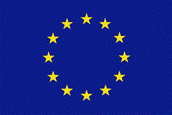

This project has received funding from the European Union Framework Program for Research and Innovation (SC5-18a-2014) under grant agreement nº 641538

Norwegian Institute for Air Research (NILU) (Norway)
NILU - Norwegian Institute for Air Research is an independent research organization
specializing in climate and air pollution research from local to global problems. The
institute was founded in 1969 and it has now about 200 employees and an annual turnover
of €26M. NILU conducts approximately 250 projects every year for government,
industry and national and international organizations. NILU has, during the last few
years, been involved in more than 90 EU and ESA financed projects relevant to
ConnectinGEO (e.g. EU: GMES-GATO, GEOMON, EUCAARI, EUSAAR, ACCENT, EARLINETASOS,
SCOUT-O3, MEGAPOLI, SHIVA, ACTRIS, InGOS; ESFRI initiatives: ICOS and SIOS; ESACCIs:
aerosol, soil-moisture, ocean color, and coordinated a number of them (e.g. EU: ECLIPSE, ESA:
SAVAA, VAST)), in addition to being present in the steering committees of several international
programs (CLRTAP-EMEP, GAW). NILU serves as the EMEP Chemical Coordination Centre (EMEPCCC.
The EMEP program comprise more than 40 Parties and forms the basis for UNECE CLRTAP
abatement policies, as well as for the EU policies on Air Quality. The EMEP-CCC coordinates the EMEP
monitoring strategy, which provides observations made at surface sites addressing fluxes of pollutants
across European boundaries. NILU is a member to the European Topic Centre for Air Pollution and
Climate Change Mitigation (ETC/ACM) and is responsible for the In situ coordination of the MACC2-
project (COPERNICUS). The institute is involved in developing INSPIRE guidelines, E-reporting and
GEOMS (Generic Earth Observation Metadata Standard).
Key project participants________________________________________________________
Dr Kjetil Tørseth. Director of the Atmospheric and Climate
Change Department (30 scientists) and Head of the EMEP Chemical Co-ordinating Centre. He is the
permanent representative of Norway for the WMO-GAW program and member of the WMO-GAW
Scientific Advisory Groups for Reactive Gases. Tørseth is a nominated member of the International
Arctic Science Committee (IASC) – Atmosphere sub group, and sits on an advisory board of the
European Metrology Research Programme: Metrology for chemical pollutants in air. He is a key expert,
Acidification and Arctic haze; Arctic Monitoring and Assessment Programme (AMAP) and a member to
the ‘National group for Volcanic Ash and Aviation’, coordinated by the Norwegian Civil Aviation
Authority. He was a principal investigator, activity leader or participant in a number of research projects
(EU research programmes, national projects etc: AirMonTech, ACTRIS, EUSAAR, GEOMON,
EUCAARI, CREATE, NitroEurope, Eurohydros, POLARCAT, NORCLIM) and was a member of the
GMES Atmosphere Service Implementation Group. Tørseth is author or co-author of more than 200
scientific reports including about 43 papers in peer reviewed literature. Key role on the project: Staff
working for the beneficiary – Head for the Atmospheric and Artic network contribution to the ENEON.
Dr Wenche Aas is senior scientist at the Atmospheric and Climate Change Department y, she works with topics concerning acidification, eutrophication, heavy metal and particulate matter, and the main experience is concerning data quality control. She is responsible for the Norwegian monitoring programme for atmospheric deposition, on behalf of The Climate and Pollution Agency. Ms Aas is project leader for the EMEP measurements of heavy metals as well as reporting to HELCOM, AMAP and OSPAR-CAMP. Ms. Aas is responsible for upgrading the EMEP manual for sampling and chemical analysis, and she is coordinating part of the EMEP intensive measurement periods, in cooperation with EMEP TFMM and several EU projects like ACTRIS. An important task for Ms Aas concerns training and capacity building in countries in Eurasia, with support from the Norwegian Ministry of Foreign Affairs. Wenche Aas is permanent member of the Scientific Advisory Group for Precipitation Chemistry (PC SAG) in WMO/GAW. Ms Aas is project leader of NILU’s Strategic Institute Programme, Source apportionment of short-lived climate forcers, financed through the Norwegian Research Council (NFR). Aas is author or co-author of more than 150 scientific reports including 28 papers in peer reviewed literature. Key role on the project: Staff working for the beneficiary – Atmospheric and Artic network contribution to the ENEON.
Overview
Objectives
Participants
CREAF
Tiwah
CNR
IIASA
CMCC
52º North GmbH
S[&]t Corporation
ICM
BIRA
ARMINES
NILU
EXETER
Institut Mines-Télécom
IEEE
EARSC









